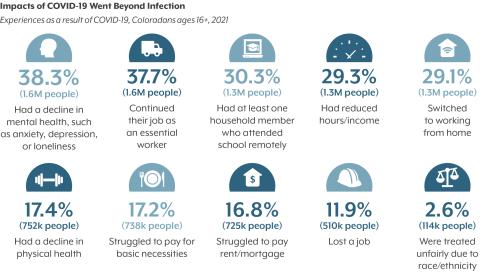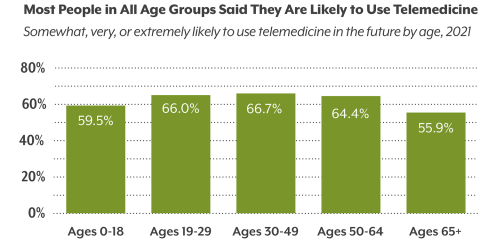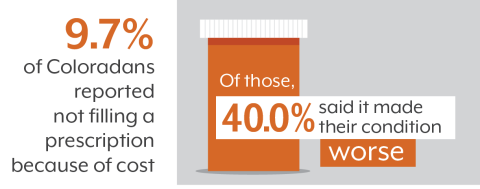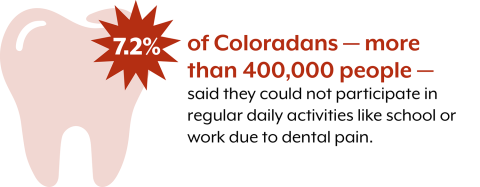The COVID-19 pandemic brought more than a novel and dangerous virus to Colorado. The 2021 Colorado Health Access Survey (CHAS) documents historic shifts in health, access to care, and social and economic conditions. More people than ever before reported challenges with their mental health, especially young adults.
Fewer people went to the doctor. Many Coloradans lost their job-based insurance, and more than a million had their incomes reduced. People of color were especially hard hit.
But that is just part of the story. The survey captures how Colorado’s existing social safety net, along with some quick policy choices and grassroots work, helped catch many Coloradans when they fell. Notably, the state’s uninsured rate did not increase because Medicaid stepped in to cover people who lost their jobs. Statewide rates of hunger and housing insecurity did not increase. Fewer people used health care, but providers and regulators created telemedicine systems almost overnight to compensate for a substantial portion of missed care.
- Expand to Read More
The effects of several policy choices are evident throughout this report, including direct payments to individuals and unemployment aid from Congress, bans on evictions by state and federal authorities, and an enhanced role for Medicaid.
Results of the CHAS demonstrate that structural disparities based on race and income are still holding back too many Coloradans and make people more vulnerable to crises like the pandemic. The pandemic did not create these disparities, but it exacerbated them — and in many cases, the relief efforts do not seem to have fully addressed them.
This survey report, Navigating Uncharted Waters, is a testament to what Coloradans have endured — and the work they did to keep a bad situation from becoming even worse.
About the Colorado Health Access Survey
The Colorado Health Access Survey is developed, analyzed, and managed by the Colorado Health Institute. CHI contracts with NORC at the University of Chicago to conduct the survey.
More than 10,000 households answered the survey between February 1 and June 7, 2021. Survey data are weighted to reflect the demographics and distribution of the state’s population. The survey was conducted in English and Spanish.
We're always interested in learning how our community uses CHAS data. No example is to small. Please share with us.






















